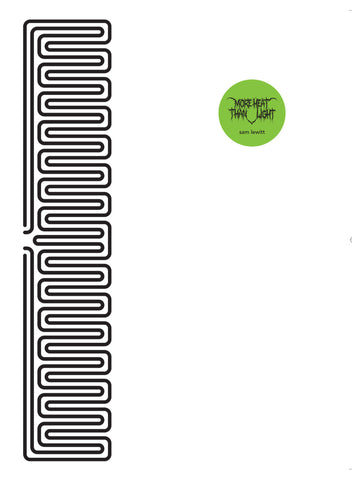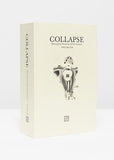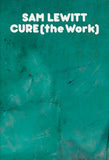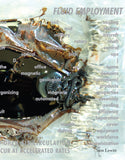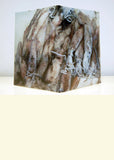More Heat Than Light
More Heat Than Light
Sam Lewitt
October 2016
Sequence Press, Koenig Books Ltd, Westreich Wagner Publications,
and Galerie Buchholz
Designed by Geoff Kaplan & Sam Lewitt
Contributions by Elena Filipovic, Melanie Gilligan, Anthony Huberman, Sam Lewitt, and Mark von Schlegell
Softcover 7.5 in. x 10.25 in., 228 pp., 200 color images
1000 copies, each with unique, split fountain gradients
ISBN 978-3-96098-016-2
More Heat Than Light is a book developed in conjunction with the eponymous exhibitions, co-organized for 2015-16 by the Wattis Institute, San Francisco and Kunsthalle Basel.
The work, exhibited at both of those institutions as well as an anonymous Airbnb rental apartment in New York, consists of oversized custom flexible heating circuits, used for environmental regulation in the sealed environments of equipment as diverse as medical equipment and food trays, in satellites and chemical vats. The heating circuits in More Heat Than Light are several times their conventional size, scaled-up and designed to draw their power and maximize the energy resources of the electrical circuits allotted for lighting within the sites they are inserted into. Energy allotted for stable artificial light is converted in this work into diffuse uneven warmth.
This process is circumscribed with a strict regime of documentation. Each iteration of the exhibition is documented with a live feed from a thermal camera. From this video feed, a single image is taken every hour of every day that the exhibition is open to the public, resulting in thousands of images cataloging the ins and outs of the exhibitions’ heat output, capturing the daily routines of exhibition maintenance as well as any viewers caught ambulating amidst the work.
The book itself, designed in collaboration with Geoff Kaplan, is conceived as a stand-alone object utilizing these images as well as research material relating to the work. On one hand, it picks-up the structure of a log of core temperatures of the sort compiled for analysis by the logistics and distribution industry. On the other hand, its format and layout utilize a two-color gradient printing process that interrupts the logical, spatial organization of the gridded screen-shots. This opposition between grid and gradient are staged in the book along a fragmentary work of theoretical fiction by Mark von Schlegell, as well as texts by Anthony Huberman, Elena Filipovic, Melanie Gilligan, and Sam Lewitt, all offering insight into some of the core themes and interpretations of the work.
